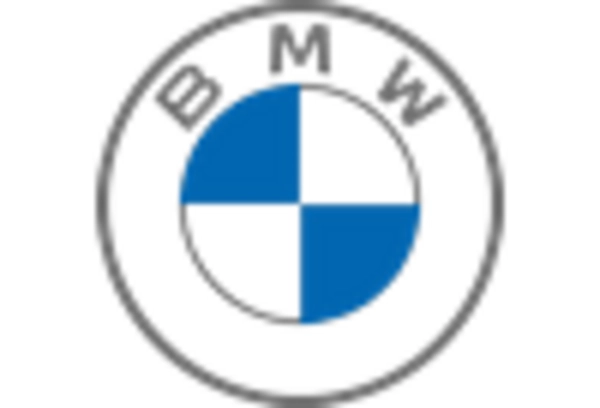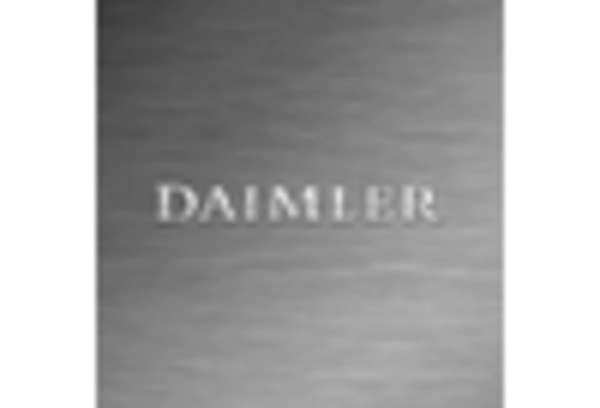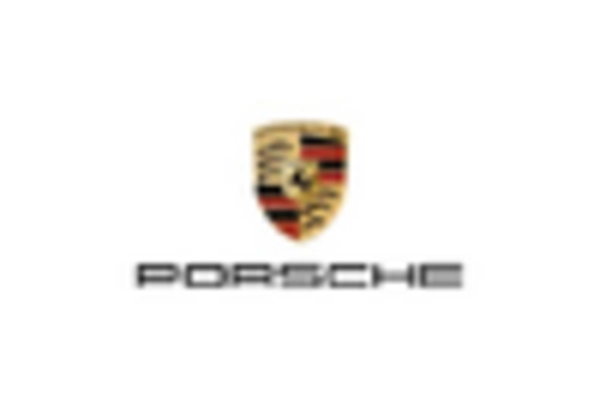Consumer Preference for Convenience
Consumer preference for convenience is a significant driver of the Automotive Inductive Wireless Charging System Market. As lifestyles become increasingly fast-paced, the demand for hassle-free charging solutions is on the rise. Inductive wireless charging systems offer the advantage of eliminating the need for physical connections, allowing users to charge their vehicles simply by parking over a charging pad. This convenience is particularly appealing to urban dwellers who may have limited access to traditional charging infrastructure. Market Research Future indicates that a substantial percentage of consumers express a preference for wireless charging options, viewing them as a modern and efficient solution. Consequently, the Automotive Inductive Wireless Charging System Market is likely to expand as manufacturers respond to this consumer demand for more convenient charging alternatives.
Growing Demand for Electric Vehicles
The increasing demand for electric vehicles (EVs) is a primary driver for the Automotive Inductive Wireless Charging System Market. As consumers become more environmentally conscious, the shift towards EVs accelerates. In 2025, it is estimated that the number of electric vehicles on the road will surpass 30 million units, creating a substantial need for efficient charging solutions. Inductive wireless charging systems offer a convenient alternative to traditional charging methods, allowing for seamless integration into daily routines. This trend is likely to enhance the adoption of wireless charging technologies, as manufacturers seek to provide innovative solutions that meet consumer expectations. The Automotive Inductive Wireless Charging System Market is thus positioned to benefit from this growing demand, as it aligns with the broader transition towards sustainable transportation.
Government Regulations and Incentives
Government regulations and incentives aimed at promoting electric vehicles are playing a pivotal role in shaping the Automotive Inductive Wireless Charging System Market. Many countries are implementing policies that encourage the adoption of EVs, including tax credits, rebates, and infrastructure investments. For instance, certain regions have mandated the installation of charging stations in new developments, which could include inductive charging solutions. These regulations not only stimulate demand for electric vehicles but also create a favorable environment for the deployment of wireless charging systems. As governments continue to prioritize sustainability and emissions reduction, the Automotive Inductive Wireless Charging System Market is likely to benefit from increased investments and support, fostering a more robust market landscape.
Integration with Smart City Initiatives
The integration of inductive wireless charging systems with smart city initiatives is emerging as a key driver for the Automotive Inductive Wireless Charging System Market. As urban areas evolve into smart cities, the need for efficient and sustainable transportation solutions becomes paramount. Wireless charging systems can be seamlessly integrated into smart infrastructure, such as parking lots and roadways, facilitating real-time energy management and optimizing charging schedules. This integration not only enhances the user experience but also contributes to the overall efficiency of urban transportation networks. As cities invest in smart technologies, the Automotive Inductive Wireless Charging System Market is poised to benefit from increased collaboration between automotive manufacturers and urban planners, leading to innovative charging solutions that align with the goals of smart city development.
Technological Innovations in Charging Solutions
Technological advancements in charging solutions are significantly influencing the Automotive Inductive Wireless Charging System Market. Innovations such as improved efficiency rates and faster charging capabilities are making inductive charging more appealing to consumers and manufacturers alike. Recent developments indicate that wireless charging systems can achieve efficiency levels exceeding 90%, which is comparable to traditional plug-in systems. This level of efficiency is crucial for the widespread adoption of inductive charging technologies. Furthermore, advancements in materials and design are reducing costs and enhancing the performance of these systems. As a result, the Automotive Inductive Wireless Charging System Market is likely to experience growth driven by these technological innovations, which are expected to attract both consumers and automotive manufacturers seeking to enhance their product offerings.


















Leave a Comment